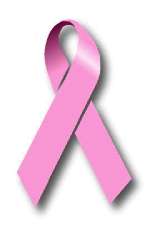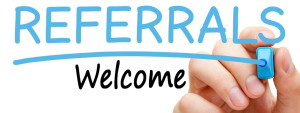
October is Breast Cancer Awareness Month
W.O.M.E.N. is going PINK for Breast Cancer Awareness Month! Throughout the month of October, we will be sharing important information vital to every woman’s health. There is no better time than now to take the best care of your body you possibly can and we hope to help you every step of the way.
The first step in being proactive regarding Breast Health can be done in the comfort of your own home, a Breast Self-Exam. A woman is suggested to perform a Breast Self-Exam once a month. Johns Hopkins Medical center states, “Forty percent of diagnosed breast cancers are detected by women who feel a lump, so establishing a regular breast self-exam is very important.” While mammograms can help you to detect cancer before you can feel a lump, breast self-exams help you to be familiar with how your breasts look and feel so you can alert your healthcare professional if there are any changes. How should a self-exam be performed? Below are some tips for performing a Breast Self-Exam at your convenience.
In the Shower: Using the pads of your fingers, move around your entire breast in a circular pattern moving from the outside to the center, checking the entire breast and armpit area. Check both breasts each month feeling for any lump, thickening, or hardened knot. Notice any changes and get lumps evaluated by your healthcare provider.
In front of a mirror: Visually inspect your breasts with your arms at your sides. Next, raise your arms high overhead. Look for any changes in the contour, any swelling, or dimpling of the skin, or changes in the nipples. Next, rest your palms on your hips and press firmly to flex your chest muscles. Left and right breasts will not exactly match—few women’s breasts do, so look for any dimpling, puckering, or changes, particularly on one side.
Lying Down: When lying down, the breast tissue spreads out evenly along the chest wall. Place a pillow under your right shoulder and your right arm behind your head. Using your left hand, move the pads of your fingers around your right breast gently in small circular motions covering the entire breast area and armpit. Use light, medium, and firm pressure. Squeeze the nipple; check for discharge and lumps. Repeat these steps for your left breast.
Can you rely on self-exams alone to make sure you are cancer free? Remember, mammograms can detect tumors before they can be felt, so screening is key for early detection. But when combined with regular medical care and appropriate guideline-recommended mammography, breast self-exams can help women know what is normal for them so they can report any changes to their healthcare provider. If you find a lump, schedule an appointment with your doctor, but don’t panic — 8 out of 10 lumps are not cancerous. For additional peace of mind, call your doctor whenever you have concerns.
W.O.M.E.N. has individual Brest Self-Exam cards in our office, which are free to the public! Can’t make it to the office? Just send us your information and we will be happy to send a card to you or your loved one.
National Breast Cancer Awareness Month
October is National Breast Cancer Awareness Month – a time to promote regular mammograms and increase early detection of breast cancer. About 1 in 8 women in the United States will get breast cancer. And every 74 seconds, someone dies of breast cancer.
Any woman can get breast cancer, even those who have no family history of the disease. Two important risk factors for breast cancer are: being a woman and growing old; however young women can and do get breast cancer.
No one knows the cause or how to prevent breast cancer, therefore; early detection is vital. If found early there are more treatment options and a higher survival rate. To increase the chances of early detection, the American Cancer Society recommends the following:
1. Mammograms
A mammogram is an X-tray of the breast and is the best screening tool available for early detection. Yearly mammograms are recommended starting at age 40. Most insurance plans, including Medicare, cover the cost of mammograms. However, if you cannot afford one or do not have insurance, contact the Susan G. Komen breast care helpline at 1-877-465-6636 for free or low cost options in your area.
2. Breast Exam
A breast exam is a physical examination of the breast by a doctor or nurse to check for changes or lumps in the breast or any other problems. Medical experts recommend that women in their 20s and 30s receive a breast exam every three years as part of their health exam. Women 40 and older should receive a breast exam every year.
3. Breast Self Awareness
All women should know what is normal for them. It is important to become familiar with how your breast normally look and feel and report any changes to your doctor. Women ages 20 and older are encouraged to do a self breast exam once a month. Click here to learn how to do a breast self exam.
In addition to the above, contact your doctor if you notice any of the following breast changes:
- Lump, hard knot or thickening inside the breast or underarm area
- Swelling, warmth, redness or darkening of the breast
- Change in size or shape of the breast
- Dimpling or puckering of the skin
- Itchy, scaly sore or rash on the nipple
- Pulling in of your nipple or other parts of the breast
- Nipple discharge that starts suddenly
- New pain in one spot that does not go away.

Breast Cancer Awareness Month
October is Breast Cancer Awareness Month,Women On Maintaining Education and Nutrition would like to stress the importance of taking action when it comes to your breast health. Breast cancer is one of the most common cancers among women in the United States and is the most frequently diagnosed cancer among nearly every racial and ethnic group. Statistics show that White women have a higher rate of developing breast cancer; however African-American women under the age of 40 have a higher incidence of breast cancer and are more than likely to be diagnosed with larger tumors. Also, African-American women are more likely to die from breast cancer and the five year survival rate is 79 percent lower than that of any other racial or ethnic group in the United States.
There are many reasons for the differences in incidence and rates of survival, which include:
Presence of risk factors
Barriers to health care access
Later stage diagnoses
Biological and genetic differences in tumors
Because of the higher incidence and lower rates of survival, early detection and breast self-awareness are critical to breast health. It is very important to be pro-active about your breast health; there are a few things you can do which include:
1. Know your risk
-Talk to your family an know your health history
-Talk to your health care provider about your personal risk
2. Get Screened
3. Know what is normal for you
– Perform a self breast exam every month and see your health care provider about any changes such as lumps or change in size or shape of the breast.
4. Make healthy lifestyle choices
– Maintain a healthy diet
– Exercise
– Limit alcohol intake






